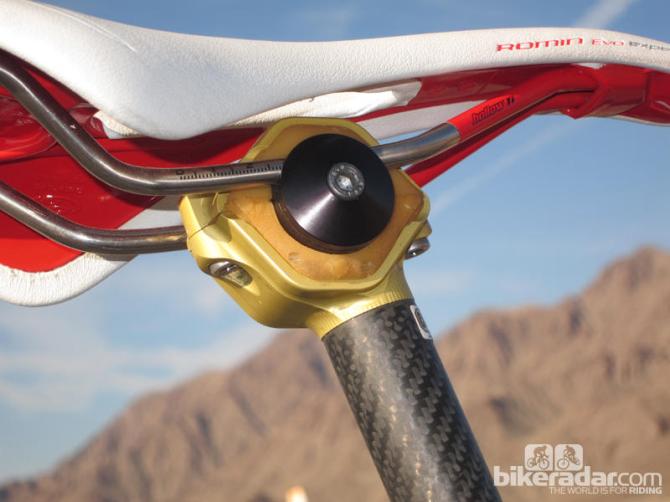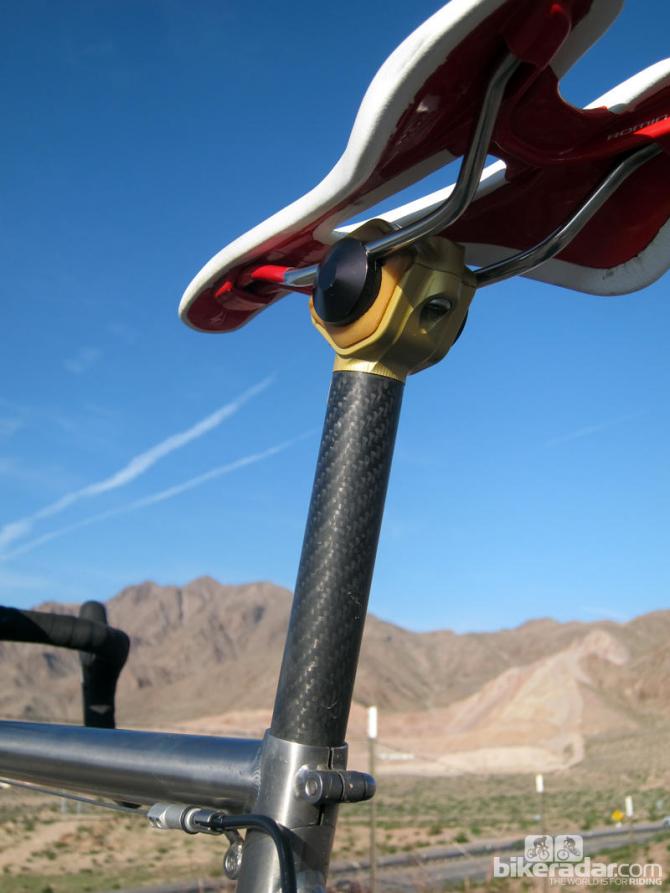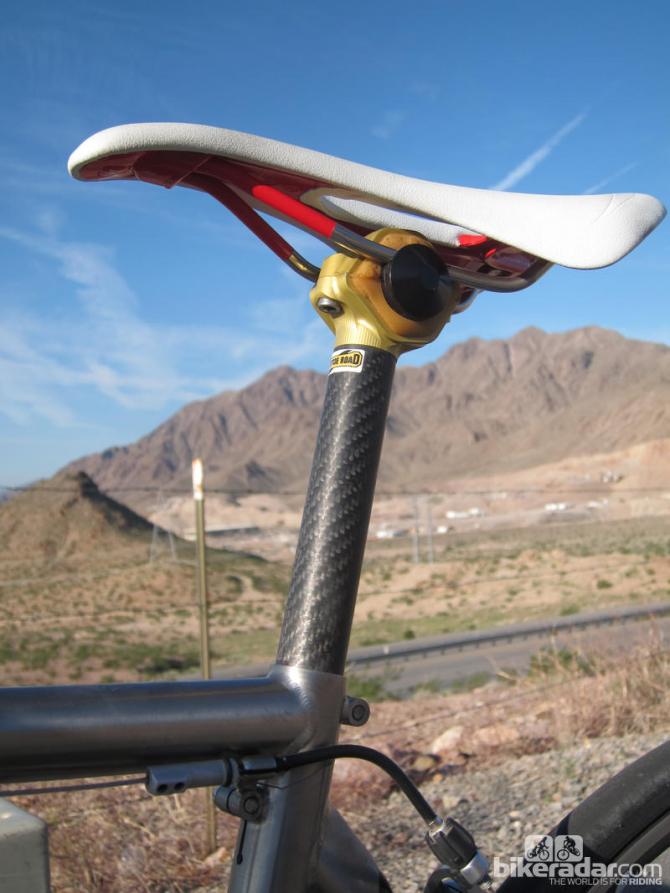Cantitoe Road BioFloat seatpost prototype - First look
Elastomer insert for isolated saddle and smooth ride



This article originally published on BikeRadar
Elastomer-equipped seatposts are nothing new. But where Specialized has used the idea to damp vibration transmitted through the shaft, and Thudbuster incorporates it as part of a proper suspension linkage, Cantitoe Road's BioFloat seatpost directly isolates the saddle clamp cradle from the rest of the head. The good news is that it works. The bad news is that you can't buy one – yet.
We weren't expecting much from the BioFloat but several days of riding around our local Colorado and Nevada stomping grounds proved otherwise. Despite the seatpost's modest appearance, we enjoyed a substantially smoother ride compared to a conventional rigid aluminum seatpost, and much more of an improvement than we would have expected from the switch from aluminum to carbon fiber.
Unlike with a suspension seatpost, though, you don't notice the saddle moving beneath you and your saddle height doesn't change. Instead, the BioFloat is remarkably adept at damping high-frequency vibration – that incessant buzz that often accompanies less-than-ideal pavement.
There's also some benefit on bigger potholes and asphalt cracks, which felt less jarring than usual. As the post's name suggests, the feeling is more that you're 'floating' across the pavement instead of just rolling over it.
"I realize mine is the perspective of the inventor but, nevertheless, I genuinely believe this represents a game changing development," said Velimpex Marketing head Tom Petrie, who designed the BioFloat together with Salsa founder Ross Shafer. "The seatpost is no longer a static connection between the bike and the saddle whose only merits are aesthetics and weight. With the BioFloat, the seatpost becomes a dynamically compliant, tunable component."
Though we only sampled the BioFloat on the road, we can see some benefit of bringing the concept to the mountain bike and cyclo-cross categories, too.
Get The Leadout Newsletter
The latest race content, interviews, features, reviews and expert buying guides, direct to your inbox!
There is some noticeable movement if you're sitting on the very front or back of the saddle, but it's hardly objectionable in most situations. Cantitoe Road builds the BioFloat elastomer with a hexagonal exterior shape, to keep the insert from rotating but to allow the material to shear internally.
Interestingly, one of the benefits Cantitoe Road touts as a result of that movement is improved biomechanical efficiency, since the saddle is theoretically free to tilt side-to-side as needed to accommodate a rider's pedaling motion. We didn't notice any improvement in that department, though.
Currently, the BioFloat is still in the development stage, but even as an admittedly rough prototype it's reasonably light at 284g (27.2x350mm) given the benefit. We'd expect a production version to shed a few grams while hopefully sporting a more elegant appearance.
We'd also like to see the elastomer shape (and possibly its durometer) refined for more precisely controlled motion, and the simple single-bolt clamp will undoubtedly need to be redesigned to accommodate the non-cylindrical rails that are becoming increasingly common.
Otherwise, though, the Cantitoe Road BioFloat seatpost is a concept we'd like to see fully developed and released to the public. Keep your fingers crossed, folks.